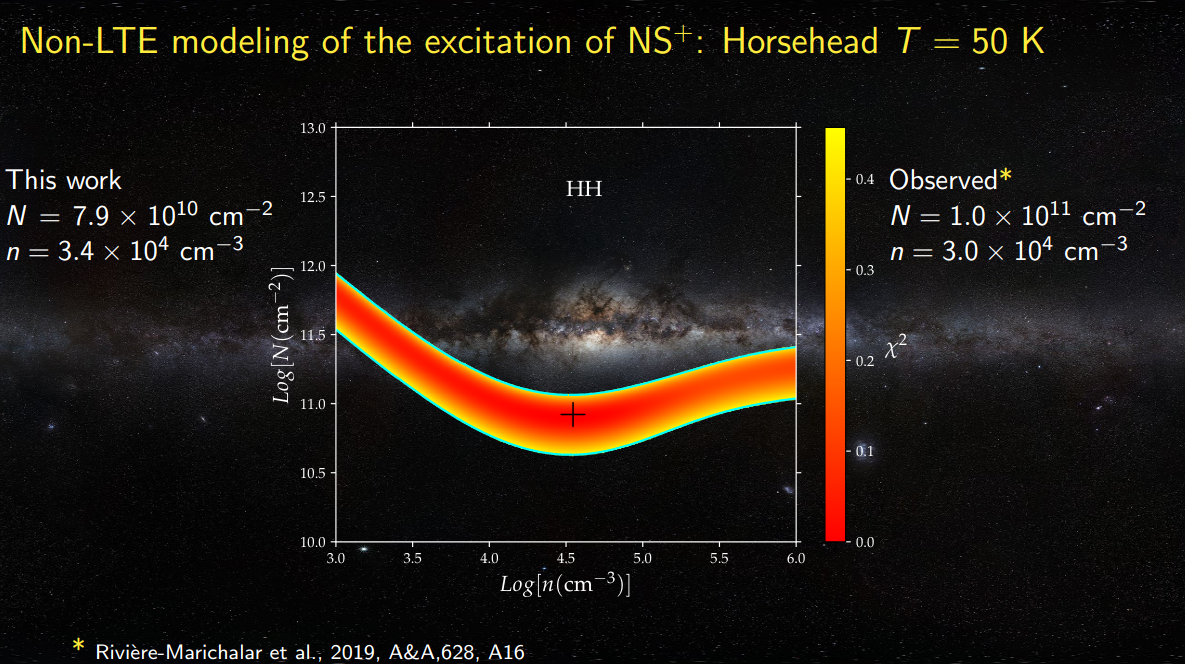by Cheikh Bop, on
Presentation of the Western pole

The Western Pole of the French Theoretical Chemistry network is a local section section of the RFCT GDR, which gathers researchers in modelling at the national level. This section assembles researchers, lecturers and engineers with expertise in modelling from different western French laboratories: Angers, Caen, Le Mans, Limoges, Nantes, Poitiers and Rennes.
The scope of expertises covers molecular and solid state theoretical chemistry, biochemical modelling, bioinformatics and theoretical physics.
The goal of this gathering is to ease scientific discussion between these various disciplines and collaboration between structures, as well as organising common formation and teaching actions at the regional level.
During this scientific meeting, C. T. Bop has presented his work in an oral presentation.
Collisional excitation of NS+ induced by ortho- and para-H2: towards non-LTE abundance modeling - C. T. Bop, Y. Kalugina, and F. Lique
Due to the lack of specific collisional data, the abundance of NS+ in cold dense interstellar clouds was determined using collisional rate coefficients of CS as a substitute. To better understand the chemistry of sulfur in the interstellar medium, further abundance modeling using the actual NS+ collisional rate coefficients is needed. For this purpose, we have computed the first full 4D potential energy surface of the NS+–H2 van der Waals complex using the explicitly correlated coupled cluster approach with single, double, and non-iterative triple excitation in conjunction with the augmented-correlation consistent-polarized valence triple zeta basis set. The potential energy surface exhibits a global minimum of 848.24 cm-1 for a planar configuration of the complex. The long-range interaction energy, described using multipolar moments, is sensitive to the orientation of H2 up to radial distances of ∼50a0.
From this new interaction potential, we derived excitation cross sections, induced by collision with ortho- and para-H2, for the 15 low-lying rotational levels of NS+ using the quantum mechanical close-coupling approach. By thermally averaging these data, we determined downward rate coefficients for temperatures up to 50 K. By comparing them with the previous NS+–H2 data, we demonstrated that reduced dimensional approaches are not suited for this system. In addition, we found that the CS collisional data underestimate our results by up to an order of magnitude. The differences clearly indicate that the abundance of NS+, in cold dense clouds retrieved from observational spectra, must be reassessed using these new collisional rate coefficients.
